



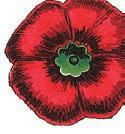














TY LIM reporter@merrittherald.com
The Merritt Royal Canadian Legion Branch is hoping for big crowds this year as it hosts its annual Remembrance Day service.


This year’s service will be held at the Cenotaph in front of the Merritt Civic Centre at 11 a.m. on November 11.
The event will feature a two-minute moment of silence commemorating those who fought and died in the line of duty.
Merrittonians have played a large part in previous conflicts involving Canada. Lifelong Merritt Legion member Nick Tolerton said there are many veterans from the Nicola Valley who served in both world wars for example.
For Tolerton, it is “critical” to honour Canadian veterans.
“It’s absolutely critical (to honour Canadian veterans) that served wherever,” he said.
He said Canadian forces served as peacekeepers in many conflicts. He gave the 1963 Cyprus conflict,
a struggle between Greece and Turkey, as an example.
“Canada was known for being a peacekeeper where there was different conflicts,” Tolerton said.
The Canadian government lists this as the country’s “best known overseas military commitment” and an example of Canadian forces helping to d iffuse tensions and save lives.
Tolteron reminds people to show up for the Remembrance day ceremony, and of the hard work of the Legion and 950 Merritt Cadet Corps to make it happen.
He said people can support their veterans by both attending the Remembrance Day service as well as donating money for a poppy.
“They can (support veterans) by acquiring a poppy, making a donation, because all the monies that are collected with the poppy campaign goes to veterans and their families, and it also goes for buying medical equipment and things like that,” Tolerton said.

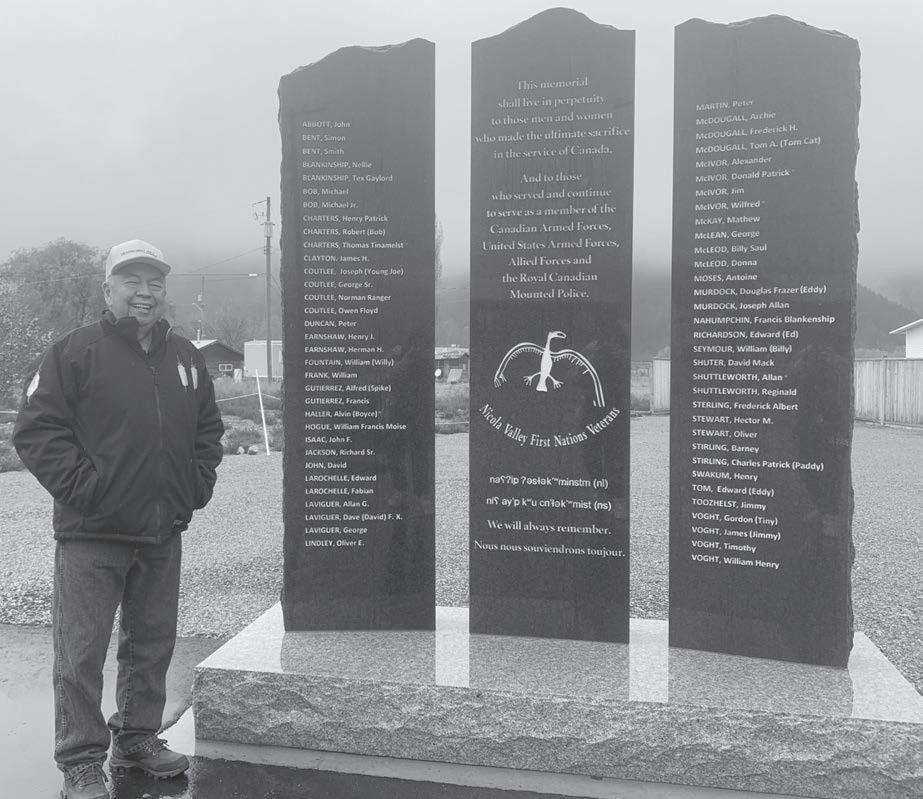
TY LIM reporter@merrittherald.com
The Nicola Valley First Nations Veterans Association is gearing up to honour Indigenous Veterans once again.
The service for Indigenous veterans is happening on Nov. 11 at the Nicola Valley First Nations Veterans monument next to the Shulus Arbour. The ceremony will be from 10a.m. until 12p.m. with
66 NAMES: continued on page A4








We hold dear to us the efforts and sacrifices our heroes have made, that an appreciation of the values they fought for will live on in all Canadians.



































Please take a moment to remember






INDIGENOUS VETERANS: continued from page A3










lunch to follow.
A member of the NVFNVA, Jimmy Isaac, said the event and monument shines light on many of the armed forces members of the Nicola Valley who have gone unsung.
“We’re getting bigger and bigger every year. We have a lot of our people, and even now, not only the aboriginal people, we have others coming down and honouring this,” he said.
“It’s nice to see that there’s some people out there that still recognize us. Recognize our people where they were never recognized before.”








Isaac first joined the NVFNVA to help his brother, J.F. Isaac, who served in the Royal Canadian Air Force.
The Indigenous monument and celebration is separate from the traditional Canadian celebration. Isaac said this is because many Indigenous veterans went unrecognized for their service.
“Our veterans were never really honoured,” he said. “Working here (In NVFNVA) is to remember all my Elders that went to World War One and World War Two that passed on.”
Isaac said more and more people are coming out to support the veterans each year.
Isaac, 75, said he is one of the 10 Elders that make up the NVFNVA. He said the group is looking for younger members to help out.
The service will be in front of the Nicola Valley First Nations Veterans Monument, a series of three pillars marking the names of veterans.
Isaac said the monument gives the Indigenous veterans a place to be immortalized, since their names do not appear on the cenotaph.
There are 66 names on the monument of those who served, six of those people did not make it home.

On Oct. 21, Merritt Mayor Mike Goetz was presented with the first poppy of this Remembrance Day season.
The campaign lasts until Nov. 11. During this time the Royal Canadian Legion will be selling
poppies and collecting donations to raise money for the Poppy Fund.
The Poppy Fund supports veterans and their families and may be used for providing grants for food, clothing, medicine or medical equipment.

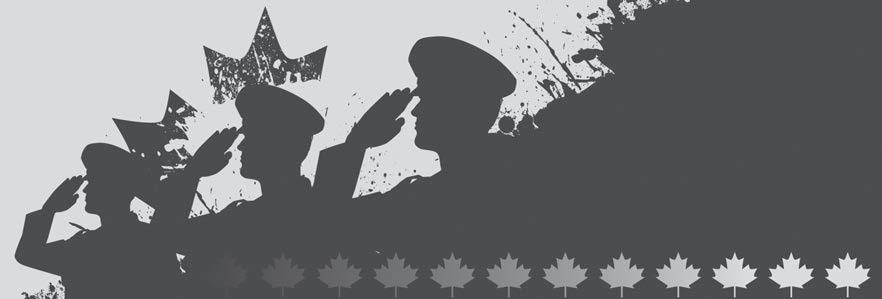













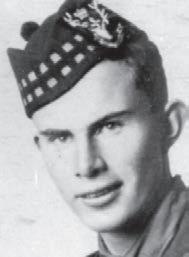
















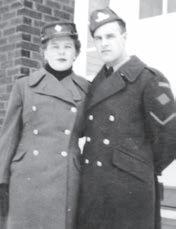
























































































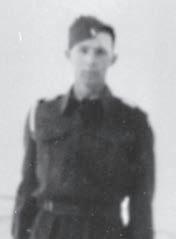
















































Ceremony to take place outside this year and everyone invited to attend. There will be barricades set up so that immediate area around cenotaph is clear and the street where color party marches is left clear.

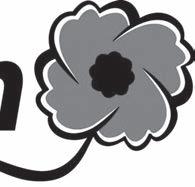
Businesses, organizations and individuals may lay their own wreaths this year if they wish to do so. There will be an open house at the Legion Lounge after ceremony. Everyone is welcome to























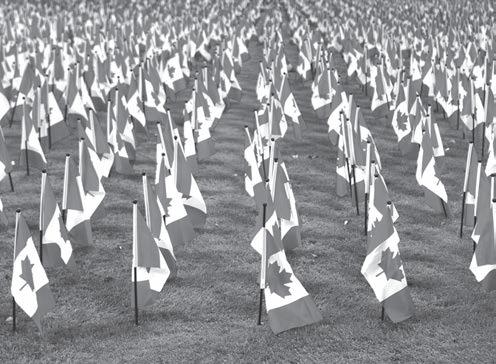



























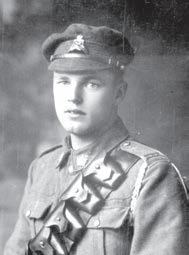




























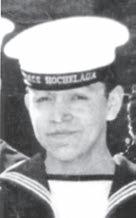



































































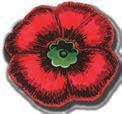











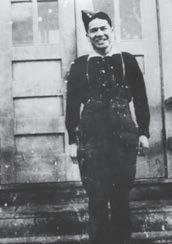


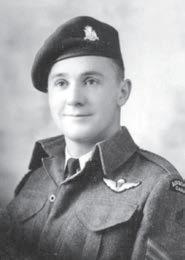










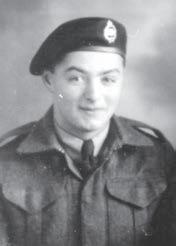















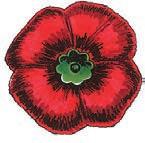





















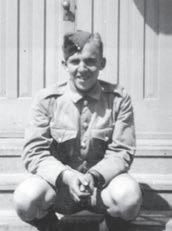





A new crosswalk in Logan Lake memoralizes local veterans.
TY LIM reporter@merrittherald.com
The District of Logan Lake is adding a new veterans crosswalk in honour of Remembrance Day.
“This special crosswalk stands as a daily reminder of the courage, commitment and resilience of our veterans and active service members.
I t’s more than just a place to cross the street - it’s a symbol of gratitude, respect and remembrance woven into the heart of our town,” the district
wrote on Facebook.
Logan Lake is not the only one to unveil a veterans crosswalk. Maple Ridge unveiled theirs earlier this summer.
West Kelowna and Merritt are also considering crosswalks.
More are being made and unveiled across the country, with some crosswalks popping up in places like Lethbridge, Alberta and Elmvale, Ontario.

PHOTO/NICOLA VALLEY MUSEUM & ARCHIVES
Nellie Blankinship enlisted in the Canadian Women’s Army Corps in 1943.
CAMERON BRIDGE
Nicola Valley Museum & Archives
Nellie Blankinship was born on Feb. 16, 1922 at her grandmother’s house on the Lower Nicola Reserve, here in the Nicola Valley. Her and her siblings lived on her families ranch. She likely attended the
school out in Nicola as she grew up, but only obtained her Grade 5 education before leaving school.
In July 1943, Nellie left the family ranch to enlist with the Canadian Women’s Army Corps. She attended basic
VET FOUND: continued on page A19

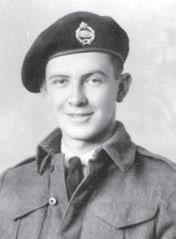













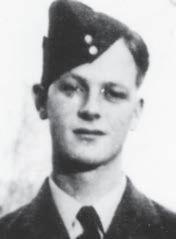







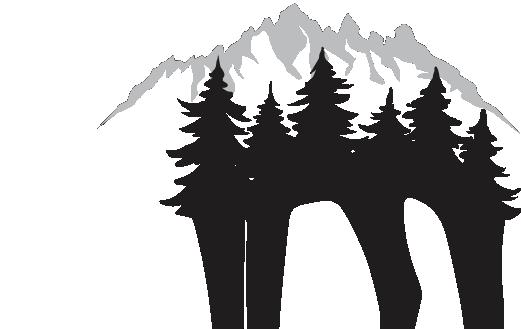










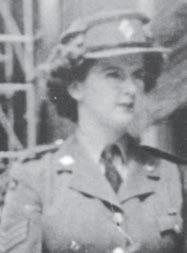








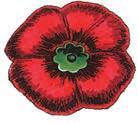


















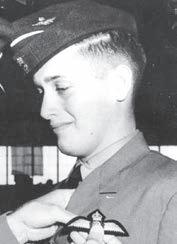























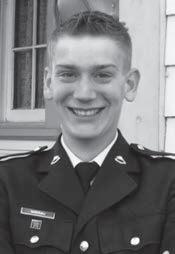





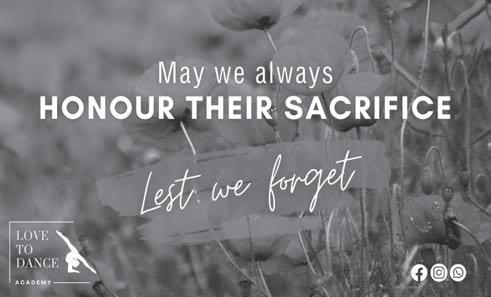
“To
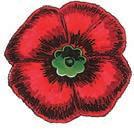

honor the sacrifices of those who served, we remember their courage, dedication, and the price they paid for our freedom.”


The Scw’exmx Tribal Council wants to express on behalf of all Canadians our Pride in this history. History is important, the history about Native veterans and the place they served with honor and distinction, home and abroad in the time of war and in keeping peace. More than 200 Canadian native soldiers were killed or died from wounds during the Second World War. Natives earned a minimum of 18 decorations for bravery in action. They participated in every major battle and campaign. On each occasion our soldiers overcame challenges and made impressive sacrifices and contributions to help our nation restore world peace. In order to fight for our country, our Native Veterans had to give up their Native Status on top of the ultimate sacrifice. May we bring home these historic memories of our ancestors and elders as we honor the Native Veterans today...
These pictures represent just a fraction of our Native Veterans



























training at Vermillion in Alberta. Nellie spoke of how hard training was, skirts were long and they were not allowed to hitch them up, uniforms were to be kept in proper shape, and yet there were only four or five irons per barracks. being sent to Gordon Head on Vancouver Island as staff for the Officer’s Training Centre. From there she was transferred to the workforce barracks in Victoria before heading to Chilliwack at the newly opened Vedder Crossing Army Base.
It was in Chilliwack that Nellie decided, “I don’t want to do this work around the kitchen or whatever” and so she asked to join the Military Police. She took a test and was sent to Camp Bordon for military police training. Training was hard, but Nellie completed it, with only her and one other woman earning 100 per cent on the final exam. Nellie was then sent to Vancouver where she’d stay for the remainder of the war. During her time in Vancouver she was promoted to Corporal with a handful of fellow women Military Police working under her. Her main duties were to patrol, and to check the passes of the women coming and going from the bases. They’d travel to the bus depots and train stations to ensure any military women who were leaving had the appropriate
documentation, and for those just out for the evening, ensuring that they returned to the base by midnight. If they were out past curfew, the MPs had jeeps to go and retrieve them. Nellie noted that while it was common for them to be upset, they would rarely get too confrontational with the male Military Police nearby.
She also recalled that it would be common that people would return to the base late, and turn the lights on past the blackout time. Nellie would go up there to tell them to turn off the lights, and they would be rude to her, so she would go and get for fellow Military Police and some officers to get them straightened out.
Nellie would be discharged from the Military Police in August, 1946 and would return home to the Nicola Valley after that. While she did speak highly and enjoy her time in the military, she did undergo sexism. She stated that many of the men did not like to see women in uniform, they would say awful things to them, or would quack at them to make fun of them as they walked by. Nellie would marry Vic Rettenbacher, and would go with him to Germany for three tours, as Vic remained in the military for 28 years until his retirement. Nellie would pass away in Vernon on December 16th, 2019 at the age of 97.









Nicola Valley Museum & Archives
In March 1979, Gwyn Brown-John happened to come across an assortment of strange wooden and rusty metal parts hanging in a tree up Tank Creek near Canford. Being uncertain as to what it was, Brown-John loaded the contraption into his pickup truck and took it home. Still being uncertain as to what the device was, he loaded it back up and took it to the Merritt Herald office where they took a picture, and in the March 14th edition of the paper, they released the photo asking if anyone knew what the device was, believing it to perhaps be a part of some prospecting equipment. The Herald soon received a number of

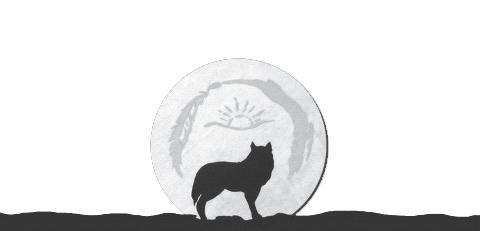





calls from locals, and Brown-John received a visit from the RCMP and members of the Canadian military. The device that Brown-John found was in fact a balloon bomb. These were incendiary explosives that were launched from Japan during the Second World War and would travel, using air currents, to North America where they would release their explosives with the intent of creating wildfires in the Pacific Northwest of Canada and the United States. The weapons proved to be largely ineffective, with estimates that only 10 per cent survived the trip over the ocean, and those that did reach North America did not manage to start many fires due to the wet weather in the early months of 1945.
The project was eventually abandoned by the Japanese after they were unable to verify if any bombs had reached the mainland, this went in hand with a memo from the military censoring newspaper agencies on any mentions of balloons being sighted or explosions caused by
said balloons. This included the Merritt Herald, which had to censor a story in the late months of the Second World War of a balloon being sighted near Nicola Lake. Crews from Kamloops were dispatched to disarm the bomb, which had yet to detonate when it touched down in the Nicola Valley.
The RCMP took a number of the rings after being unable to ascertain if the explosives were still active or not to the local dump and detonated them, discovering that they were still active after 35 years. After discovering what the device was, Brown-John’s first instinct was to donate the remaining pieces to the local archives. But after the visit with the members of the Canadian Military, decided to donate it to them instead, as it was the most intact version of the weapon that they had ever seen and wanted to use it for training and teaching others. While these explosives were found quite commonly in the couple decades after the war, they have still continued to be found, including most recently in 2019 near McBride.
CAMERON BRIDGE
Nicola Valley Museum & Archives
Robert Hogg was born on April 13, 1885 in Fifeshire, Scotland. At the age of 25, in 1910, Hogg came to Canada and ended up in Merritt working in the coal mines. During the First World War, Hogg would enlist with the 72nd Highlanders of Vancouver on June 28th, 1915.
When he got to France he was dragged into the 16th Canadian Scottish. The 16th Canadian Scottish fought at many of the major Canadian battles of the First World War, including the Second and Third battles of Ypres, the Somme, Vimy Ridge, Hill 70, and Passchendaele.
The battalion would be dissolved and Robert would be discharged on April 14, 1920.
When he returned to Merritt he became heavily involved in the community.
He was often the acting Chief of Police if the chief was unwell, he was also an executive for the Merritt and District Liberal Association, a member of the Hospital Board, and he was involved in organizing local festivities such as Labour Day celebrations as well as the Caledonian Games.
He was elected alderman for the City in 1932.
He was also the second President of the Merritt Legion, first becoming president in 1930, then stepping back during his tenure as alderman, before
PRESIDENT: continued on page A22














returning to the presidency in 1934. During his time as president, he was best known for his assistance to veterans, arranging pensions, and other needs.
He would also often arrange funerals for many of the homeless veterans after the war who passed away, arranging funerals for those who passed away far away from their families.
On September 6, 1936, at the age of 51, Hogg suffered a heart attack at his home and passed away. His funeral was held under the Legion auspices with the Legion chaplain officiating the service before he was buried at Pineridge. As he was the acting president, a vote was held and Charles Isitt was elected the acting president.


CAMERON BRIDGE
Nicola Valley Museum & Archives
Reginald Shuttleworth was born in Aspen Grove in 1897.
Shortly after the outbreak of war in 1914, he enlisted with the Second Canadian Mounted Rifles at the age of 17 on Dec. 8, 1914.
Reginald ended up being part of the Canadian Expeditionary Force and was sent to France. Reginald was an experienced horseman, e ven from a young age, and this experience transferred very well to war and made him very popular with his senior officers and fellow soldiers at the front.
At one point




However, Allan Shuttleworth was killed in action in 1917. His name is on the Merritt Cenotaph.
Reginald was medically discharged on August 5th, 1918




during the war, Reginald received a citation for bravery on the front lines. During the course of a battle, Reginald ended up getting wounded.
However, despite his wounds he was still able to carry his commanding officer, Major La























































































